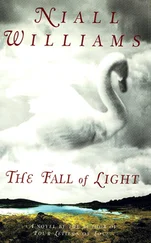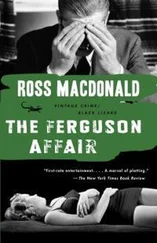Mrs. Kissinger, who did not intend to join us for dinner, surprised me by sitting down. She had a question. There was a pause. “Why do you suppose,” she asked me, “that Henry was really making all those trips to Paris?”
I had completely missed — because it was nowhere documented — that Kissinger’s prime motive for being in Paris in 1967 was the fact that she was studying at the Sorbonne that year.
The history of Kissinger’s relationship with his second wife may serve as a warning to all biographers, but particularly to biographers of Henry Kissinger. Walter Isaacson correctly established that Kissinger had first met Nancy Maginnes in 1964 at the Republican National Convention in San Francisco. 6But in chronicling Kissinger’s career as a less than secret “swinger” during his time as Nixon’s national security adviser, Isaacson assumed that she was no more than Kissinger’s “most regular date.” In his chapter on Kissinger’s “Celebrity,” he listed no fewer than a dozen other women whom Kissinger went out with in the early 1970s. 7
Isaacson was right that his fellow journalists had missed the story. Nancy Maginnes went wholly unmentioned by The New York Times until May 28, 1973—nine years after their first meeting — when the newspaper reported that she (characterized as “a frequent companion of Dr. Kissinger”) had arranged for his fiftieth birthday dinner to be held at the Colony Club, of which she was a member. 8Four months later, when she was Kissinger’s guest at a dinner for the UN diplomatic corps at the Metropolitan Museum of Art, the Times was informed by a spokesman for the secretary of state, “She’s just another guest, not a hostess.” 9On December 21, 1973, another Kissinger spokesman “flatly denied” that he was going to marry Nancy Maginnes. 10On January 3, 1974, Kissinger himself declined to “make any comment on my personal plans.” 11The next day they were spotted dining together with none other than the proprietor of The Washington Post; the newspaper promptly published Kissinger’s denial that they intended to wed. 12Despite being subsequently sighted at an ice hockey game and at a cocktail party with Vice President Gerald Ford, the couple succeeded in completely surprising the media with their wedding on March 30. Indeed, Kissinger went straight to the ceremony from a press conference at which he made no reference whatsoever to his private life. 13The announcement was not made until half an hour after they had taken off for their honeymoon in Acapulco. As the Post reported in aggrieved tones,
So eager were the couple for privacy that the one reporter who saw them leaving the [State] Department was forcefully restrained by a uniformed guard so that she could not approach them. Her building pass was then taken and information copied down before it was returned. An aide to Kissinger had drawn his car up so as to prevent anyone from following the couple from the basement parking area. 14
This at a time when The Washington Post was leading the campaign to expose the far bigger secret of Richard Nixon’s complicity in the Watergate scandal!
Yet the secrecy surrounding Kissinger’s second marriage cannot be explained solely by “the aversion to publicity expected of a well-bred lady.” 15For it was Kissinger, too, who ensured that their relationship remained a purely private matter for close to ten years. To understand why that was, the biographer needs a kind of knowledge that cannot always be found in documents: knowledge of the inner and largely unwritten life that a man lives in his roles as a son, a brother, a lover, a husband, a father, a divorcé. In addition, to understand how the Kissingers preserved their privacy for so long, the biographer must understand the complicity that then still existed between the news media and the political elite. For the reality was that press barons and Beltway reporters alike knew full well about Kissinger and Maginnes; knew that for years they were together either in New York or in Washington roughly one weekend in every two. It was just that they tacitly agreed not to print what they knew.
No biographer finds out everything, because not everything can be known — not even to the subject himself. No doubt there are important events I have missed, relationships I have misunderstood or underestimated, thoughts that simply were not written down and are now forgotten even by their thinker. But if so, this has not been for want of effort. I leave it to the reader to decide how far I have succeeded in being, in some sense, Kissinger’s Boswell — and how far I have avoided precisely that trap.
Cambridge, Massachusetts
April 2015
Introduction
After all, didn’t what happened to me actually happen by chance? Good God, I was a completely unknown professor. How could I have said to myself: “Now I’m going to maneuver things so as to become internationally famous?” It would have been pure folly…. One might then say it happened because it had to happen. That’s what they always say when things have happened. They never say that about things that don’t happen — the history of things that didn’t happen has never been written.
— HENRY KISSINGER to Oriana Fallaci, Nov. 4, 1972 1
I
Surely no statesman in modern times, and certainly no American secretary of state, has been as revered and then as reviled as Henry Kissinger.
When Oriana Fallaci interviewed him in November 1972, Kissinger had not yet attained the zenith of his fame. Looking back on their encounter a few years later, Fallaci sardonically parodied the magazine covers of the time:
This too famous, too important, too lucky man, whom they call Superman, Superstar, Superkraut, and who stitches together paradoxical alliances, reaches impossible agreements, keeps the world holding its breath as though the world were his students at Harvard. This incredible, inexplicable, unbearable personage, who meets Mao Tse-tung when he likes, enters the Kremlin when he feels like it, wakens the president of the United States and goes into his bedroom when he thinks it appropriate. This absurd character with horn-rimmed glasses, beside whom James Bond becomes a flavorless creation. He does not shoot, nor use his fists, nor leap from speeding automobiles like James Bond, but he advises on wars, ends wars, pretends to change our destiny, and does change it. 2
Clad as Superman, tights, cape, and all, Kissinger did in fact appear as a cartoon “Super K” on the cover of Newsweek in June 1974. Successive Newsweek covers had depicted him as “The Man in the White House Basement,” as “Nixon’s Secret Agent,” and as an American Gulliver, swarmed over by Lilliputian figures representing “A World of Woes.” Time magazine was even more captivated. While in office, Kissinger appeared on its cover no fewer than fifteen times. He was, according to one Time profile, “the world’s indispensable man.” 3
Of course, there was an element of humor in all this. The joke was already doing the rounds by late 1972: “Just think what would happen if Kissinger died. Richard Nixon would become president of the United States!” 4The compound word “Nixinger” was briefly in vogue to imply Kissinger’s parity with the president. On the cover of Charles Ashman’s Kissinger: The Adventures of Super-Kraut, published in 1972, the eponymous superhero appeared disheveled, with telltale lipstick on his cheek.
Yet Kissinger’s popularity was real. That same year he came in fourth in Gallup’s “Most Admired Man Index”; in 1973 he was number one. In May of that year, 78 percent of Americans were able to identify Kissinger, a proportion otherwise achieved only by presidents, presidential candidates, and the biggest stars of sport and screen. 5By the middle of 1974 his approval rating, according to the regular Harris survey, was an astounding 85 percent.
Читать дальше











